Whether or not to paint thermofoil cabinets is a widely debated topic. Their smooth finish and vinyl-like surface make it difficult to paint.
Some homeowners even suggest that if you are to paint, you must peel off the thermofoil first. Others claim it’s impossible to paint thermofoil and make it last longer.
However, what do you do if your kitchen is that of the 90s and your thermofoil kitchen cabinets have faded?
Luckily, I did my research, and I am ready with the answer just for you.
Let’s dive right into it.
JUMP TO : Preparing Thermofoil Cabinet for Painting | Painting Thermofoil Cabinets | Best Paints | Safety Guidelines While Painting| Painting Aftercare |
The Answer:
Yes, you can paint thermofoil cabinets.
These cabinets are made from MDF (medium density fiberboard) wood or a thin layer of vinyl laminate substance fused over a particle board. That’s why they resemble laminate cabinets.
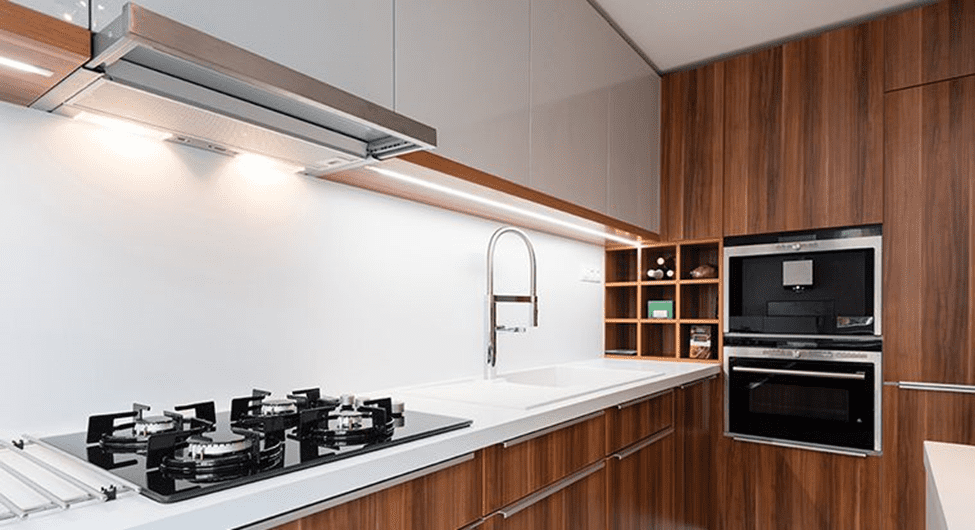
Source: cabinetland.us
Painting thermofoil can be pretty difficult because this material is smooth and non-porous. Nevertheless, it is not impossible.
You can successfully paint over thermofoil provided:
- It is not peeling
- You have the right equipment
- You do the necessary preparation
Consider some factors when painting your kitchen cabinets. These include:
- Visit your local paint store and inquire about the correct primer and top coat to use.
It would be helpful if you carried a cabinet door to the paint store.
- Ensure that you rough up the surface with fine-grit sandpaper so the paint can adhere well.
How to Prepare Thermofoil Cabinets for Painting
Painting thermofoil is not as easy as painting other woods. It requires a lot of prep work before the main painting.
Here is how the preparation process goes:
Clean the Cabinets
The cabinets should be cleaned gently with a soft sponge and warm, soapy water. This step is essential in removing stuck-on grease, cooking oil, grime, or dirt.
Pat the surface dry with paper towels or a kitchen towel.
Sand the Surface
Using medium-grit sandpaper (220 grit), lightly sand the drawer fronts and kitchen cabinet doors.
Make sure the thermofoil layer does not peel off.
Clean Again
Gently clean the lightly sanded surfaces to remove dust and debris left.
Allow the surface to air-dry.
Apply Primer
Using a paintbrush, apply the primer to the cabinet surface. Ensure you cover the grooves, crevices, corners, and any intricate detail on the wood.
Note: When applying primer on your cabinets, ensure that the room is well-ventilated.
Use a Roller to Prime
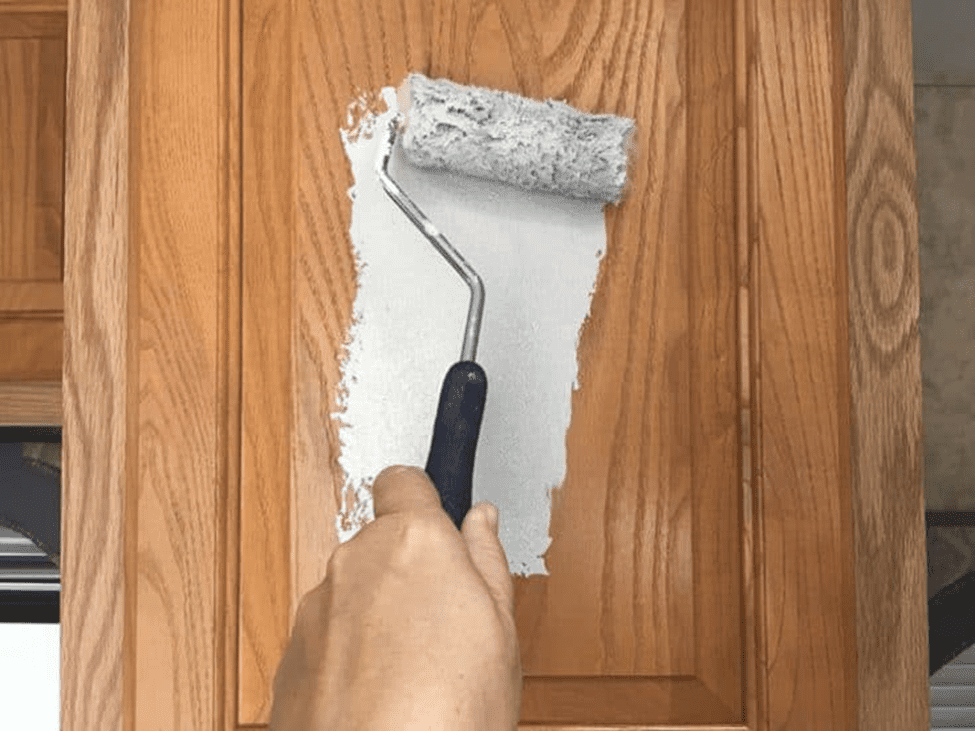
Source: thepalettemuse.com
A roller helps to smoothen out any brush strokes to make the primer look even, smooth and nice.
Start with the inside, then the outer edges.
After the first coat has dried, you can consider adding another coat. Two or three coats are necessary if you are changing the color of your cabinets completely.
Note: If you use a foam roller, you may sometimes find air bubbles forming after priming. In such a case, lightly roll over the surface to pop the bubbles and flatten them out.
The primer does not have to look perfect. However, the smoother the surface, the better the paint will adhere.
How to Paint Thermofoil Cabinets
Here is a step-by-step process of painting thermofoil kitchen cabinets.
Supplies Needed
- Primer
- Paint
- Foam brush
- A 4-inch foam roller
- A plastic paint tray
- Painter’s tape
- A regular paintbrush
- Sanding block or a 220-grit sandpaper
- Polyurethane top coat (optional)
The painting process
First Application
After prepping and priming your cabinets, it’s time to apply the paint.
Using a paintbrush and careful strokes, apply the paint to your cabinet surfaces, including the edges, corners, and crevices.
Note: Many people prefer using brushes, but you can also use a paint sprayer.
Even Out the Paint
Even out the brushstrokes with 220-grit sandpaper before the paint dries.
Allow the paint to dry.
Leave the paint to air-dry. This process could take several hours, depending on the temperatures or airflow in the house and the type of paint used.
Add a Second Coat
Aim for two to three coats of paint. Although this step is optional, it is ideal when changing the color of your kitchen cabinets.
Apply a Top Coat
After your paint is dry, you can finalize the process by applying a water-based polyurethane top coat.
Applying a top coat is the best way to prolong the lifespan of your thermofoil cabinet doors. You can either use glossy, matte, or satin finishes.
Also Read: How to Lighten Up a Kitchen with Cherry Cabinets? 16 Ways
The Best Paints for Painting Thermofoil Cabinets
The market is awash with different paints for painting thermofoil cabinets. However, the three below are the most common and the best.
Satin Finish Latex
Are you looking for a matte feel on your cabinets?
If yes, satin-style paints are your best option. It features pigments (particles of color) that enable it to absorb the light that falls on its surface.
Moreover, satin has a soft, warm glow coupled with durability and shine to offer you the best of both worlds.
Important note: The higher gloss of satin translates to higher durability. However, lower gloss is great for masking imperfections.
So, why is satin among the best choices?
- It has excellent moisture resistance.
- You can use it outdoors and indoors.
- Its color is richer than that of gloss paints thanks to many pigments
- Easy to clean
- Great at hiding flaws on your cabinet
Enamel
If you are looking for durability, enamel paint is your best choice.
However, it’s more expensive compared to other paints.
The kitchen is one of the house’s most humid and hottest rooms, requiring long-lasting paint. For this reason, enamel paint will serve you better.
Besides, enamel paint will give your thermofoil cabinets a polished, glossy look.
Although it takes longer to dry, enamel paint leaves no brush marks on the surface.
So, why use enamel paint?
- Provides smooth and near-perfect final result
- It ends up with a harder finish
- It can last for many years
- You can wash it if it gets stained
- It comes in a wide variety of colors
Caution: Enamel paint negatively affects the environment if it spills.
Water-Based Latex
Unlike most oil-based paints that may be toxic, water-based latex paints are safe.
Here is why water-based latex paint could be your best option:
- It’s quite cheap
- Easy to remove
- Dries quickly (1-2 hours per coat)
- It has no foul smell like that of oil-based paints
- It comes in different types of sheen
Safety Guidelines when Painting Cabinets
Putting a fresh coat of paint on your thermofoil cabinets will spruce up your kitchen’s interior. However, this process comes with health risks.
According to research, inhaling paint fumes can cause:
- headache
- nausea
- dizziness
- breathing trouble
- irritation of the nose, eye, or throat
- damage to the liver, kidneys, or the nervous system (long-term effects)
According to the World Health Organization, the lead in paints can be poisonous.

source: communitymedicine4all.com
Here are a few precautions to take:
Keep Children & Pets Out Of Reach
According to research, 3.6 million American homes with children have significant paint hazards.
As the paint dries, keep your children and pets away.
This precaution is helpful twofold. First, pawprints or fingerprints could ruin your paint design. Secondly, the paint’s fumes could affect your children’s or pets’ health.
Open Your Windows
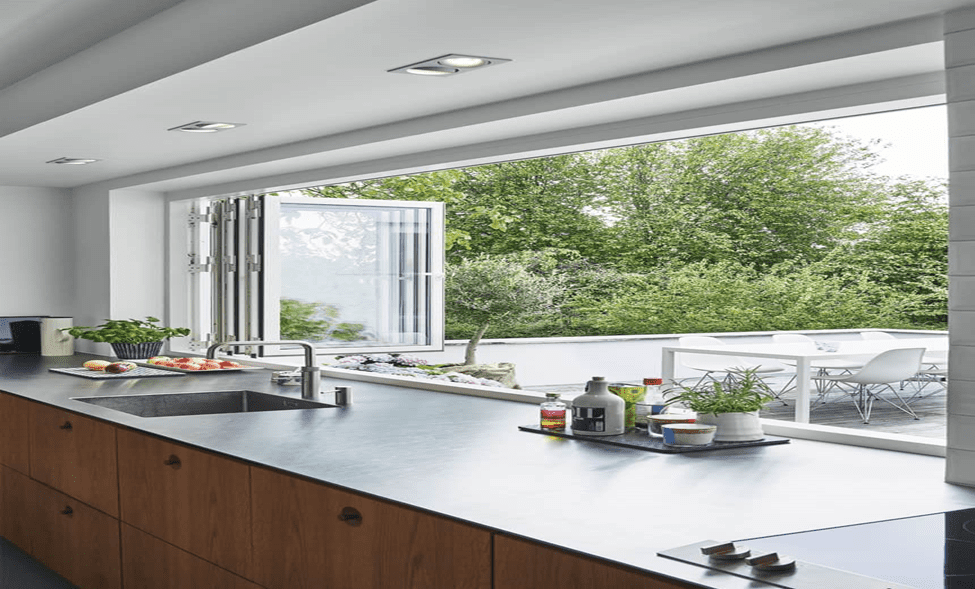
Source: trendier.com
For effective painting, it’s good to take the cabinet doors off the hinges and paint them separately.
This process requires good ventilation to allow air to circulate in your home. Opening the windows of your house helps you to achieve this easily.
Moreover, open windows allow air, making the drying process quicker. Additionally, they protect you from inhaling too many fumes.
How to Maintain Thermofoil Cabinets After Painting
If you do it well, painting your thermofoil cabinets can powerfully transform your space. Nonetheless, remember that even the best paint jobs fade with time.
So, a thorough painting job on your kitchen cabinets will keep them beautiful and safe. However, how you maintain your cabinets will determine how long this lasts.
Here are a few maintenance tips to help you:
Keep Your Cabinets Clean
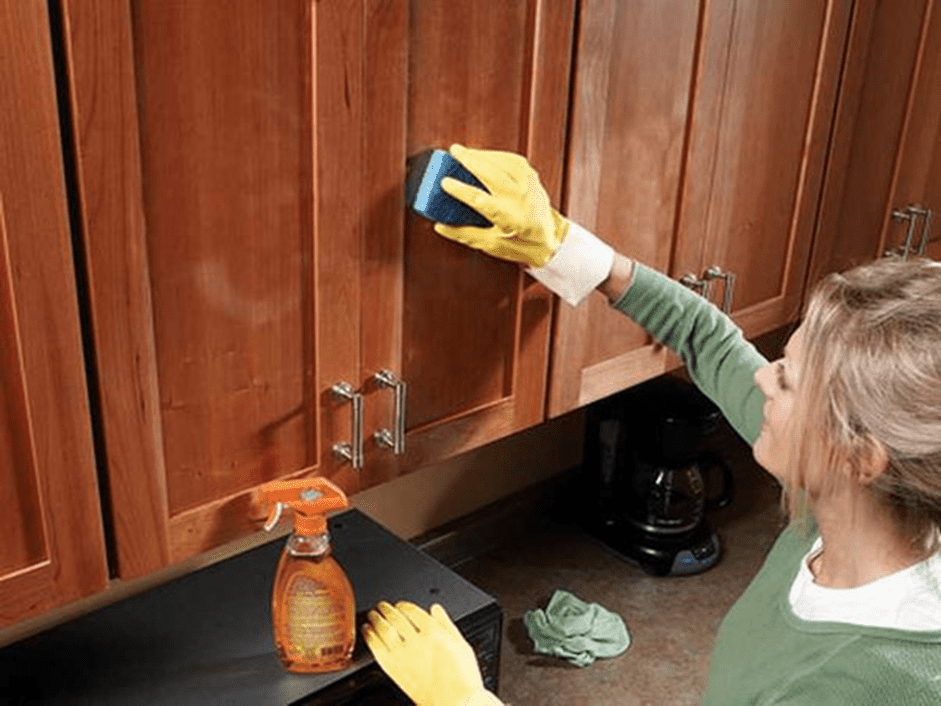
Source: quora.com
Clean your cabinets as frequently as necessary. Don’t allow dust accumulation, scuff marks, or dirt to remain on your cabinets for long.
Scrubbing lightly with a sponge soaked in water will help you eliminate all dirty marks.
Protect Your Cabinets from too Much Exposure to Sun
Too much direct outdoor sunlight can cause your paint job to fade. Although this fading is more significant for some types of paints, regulate the amount of sunlight that graces your kitchen cabinets.
Reduce Contact with Moisture
Moisture from stovetops or stoves can affect your paint job. Proper ventilation will help you to avoid this. In addition, ensure that you maintain your home’s HVAC system properly.
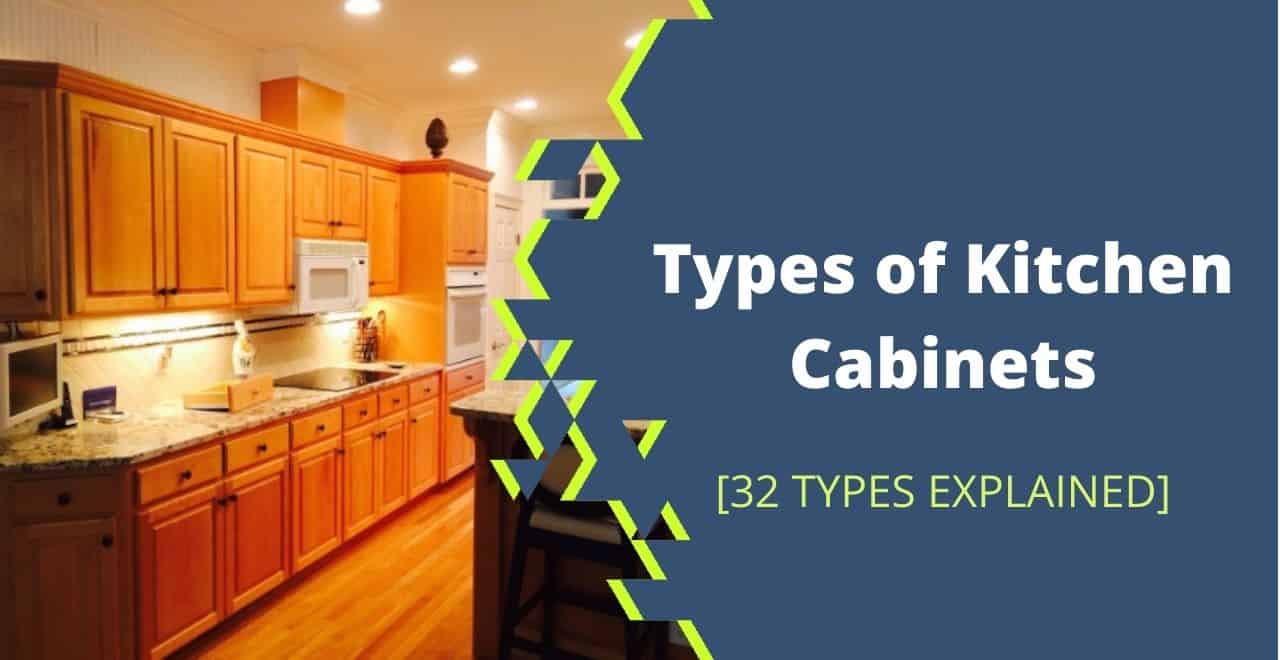
![How Long Do Thermofoil Cabinets Last? [Factors Explained] How Long Do Thermofoil Cabinets Last? [Factors Explained]](https://houseadorable.com/wp-content/uploads/2022/09/thermo-1.jpg)
![16 Types of Kitchen Cabinet Finishes [Features + Pros & Cons] 16 Types of Kitchen Cabinet Finishes [Features + Pros & Cons]](https://houseadorable.com/wp-content/uploads/2022/10/cabinet-finish.jpg)
![How Long Does it Take to Install Kitchen Cabinets? [Steps Explained] How Long Does it Take to Install Kitchen Cabinets? [Steps Explained]](https://houseadorable.com/wp-content/uploads/2022/07/kitchen-cabinet-installation.jpg)
![Painted Vs. Thermofoil Cabinets [Explained with Pros + Cons] Painted Vs. Thermofoil Cabinets [Explained with Pros + Cons]](https://houseadorable.com/wp-content/uploads/2022/09/Thermofoil-Kitchen-Cabinets-Are-Better-Than-Wood.jpg)
![Pros and Cons of Thermofoil Cabinets + Drawers [Explained] Pros and Cons of Thermofoil Cabinets + Drawers [Explained]](https://houseadorable.com/wp-content/uploads/2022/09/thermofoil.jpg)
![How to Clean Kitchen Cabinets Without Removing Finish[8 Methods] How to Clean Kitchen Cabinets Without Removing Finish[8 Methods]](https://houseadorable.com/wp-content/uploads/2022/06/care-for-kitchen-cabinet.jpg)
![Granite Vs. Marble Vs. Quartz Countertops [12 Differences+Pros & Cons] Granite Vs. Marble Vs. Quartz Countertops [12 Differences+Pros & Cons]](https://houseadorable.com/wp-content/uploads/2022/03/quartz-marble.jpg)